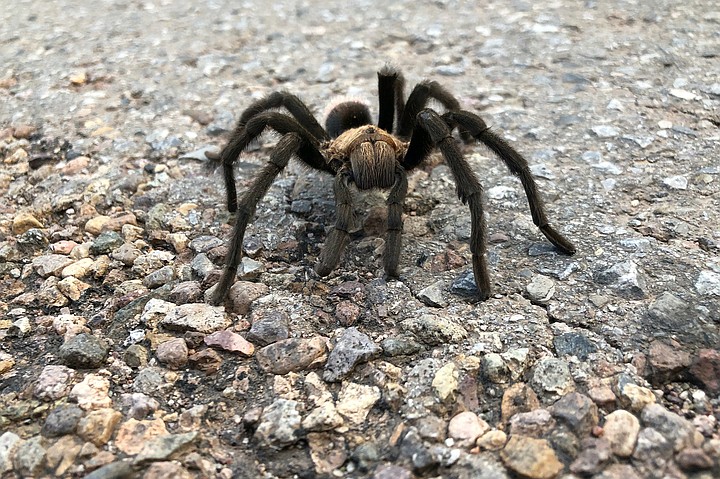 Facebook
Facebook
 X
X
 Instagram
Instagram
 TikTok
TikTok
 Youtube
Youtube

Acorn Dropping Reaches A Crescendo This Month in the Cuyamaca, Laguna, and Palomar mountains. Wiry scrub oaks, massive canyon live oaks, and the golden-leaved black oaks all contribute to the growing collection of acorns littering the ground. Acorn woodpeckers are busy stuffing acorns into the small holes they drill into the bark of pine trees. Beneath the trees, the browns of bracken fern and the reds of poison oak and Indianbasket bush are among the last expressions of autumn color we’ll see in the mountains this year.

Roaming Tarantula Spiders Are Occasionally Seen this time of year crossing rural roads or marching through some of San Diego’s canyon-bordering neighborhoods. Doggedly searching for a mate, a male will try to hold its course despite your best effort to deflect or hinder him. Docile in temperament, most tarantulas will tolerate gentle handling; they may bite, however, if provoked. Despite their fearsome reputation, tarantula venom is less powerful than a bee’s.

Sycamores, Found In San Diego’s Coastal And Foothill Canyons as well as in suburban and park landscaping, stand at their autumnal best this time of year. Stroll beneath their crispy, rustling canopies and catch the sunbeams scattering among their mottled trunks and yellow-brown leaves. Some of San Diego’s biggest native sycamores reside in Lopez Canyon, a part of Los Peñasquitos Canyon Preserve near Sorrento Valley. Hundreds of sycamores can be also be seen in Marian Bear Park (San Clemente Canyon) along Freeway 52 between University City and Clairemont.
Mars Will Be Shining Bright On November 20. The red planet will rise from the northeast and be the brightest “star” right next to the Moon at around 9:30 pm.


Acorn Dropping Reaches A Crescendo This Month in the Cuyamaca, Laguna, and Palomar mountains. Wiry scrub oaks, massive canyon live oaks, and the golden-leaved black oaks all contribute to the growing collection of acorns littering the ground. Acorn woodpeckers are busy stuffing acorns into the small holes they drill into the bark of pine trees. Beneath the trees, the browns of bracken fern and the reds of poison oak and Indianbasket bush are among the last expressions of autumn color we’ll see in the mountains this year.

Roaming Tarantula Spiders Are Occasionally Seen this time of year crossing rural roads or marching through some of San Diego’s canyon-bordering neighborhoods. Doggedly searching for a mate, a male will try to hold its course despite your best effort to deflect or hinder him. Docile in temperament, most tarantulas will tolerate gentle handling; they may bite, however, if provoked. Despite their fearsome reputation, tarantula venom is less powerful than a bee’s.

Sycamores, Found In San Diego’s Coastal And Foothill Canyons as well as in suburban and park landscaping, stand at their autumnal best this time of year. Stroll beneath their crispy, rustling canopies and catch the sunbeams scattering among their mottled trunks and yellow-brown leaves. Some of San Diego’s biggest native sycamores reside in Lopez Canyon, a part of Los Peñasquitos Canyon Preserve near Sorrento Valley. Hundreds of sycamores can be also be seen in Marian Bear Park (San Clemente Canyon) along Freeway 52 between University City and Clairemont.
Mars Will Be Shining Bright On November 20. The red planet will rise from the northeast and be the brightest “star” right next to the Moon at around 9:30 pm.
Comments